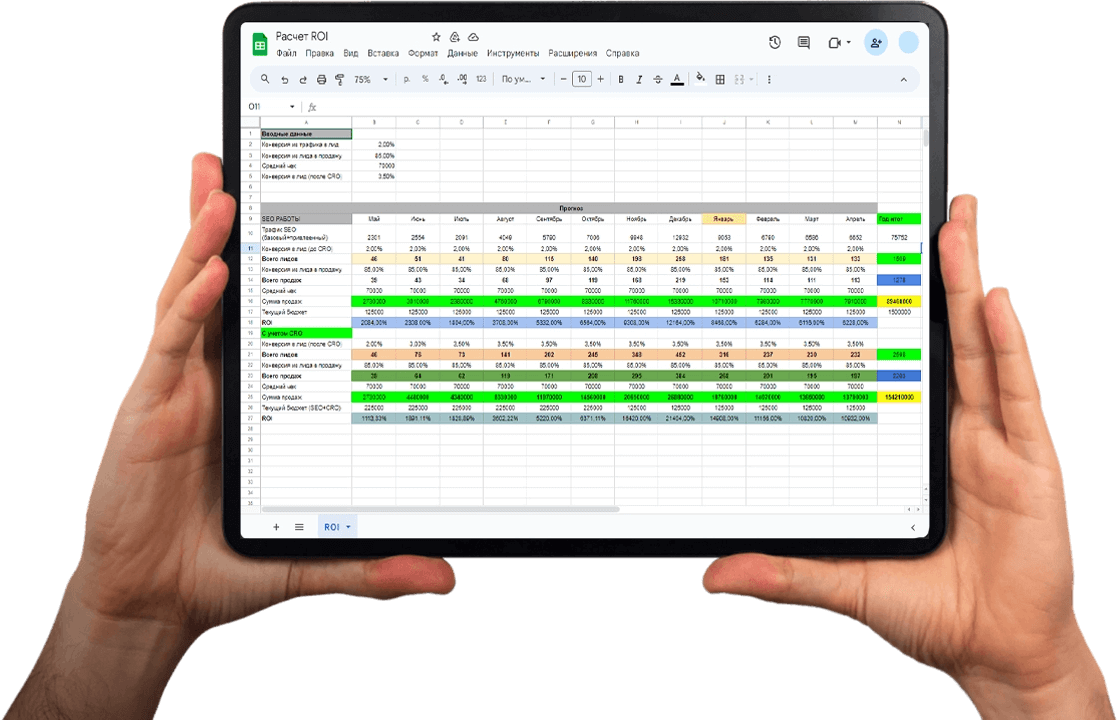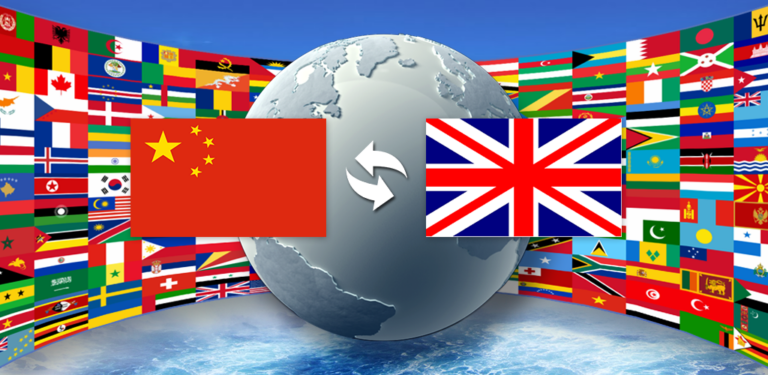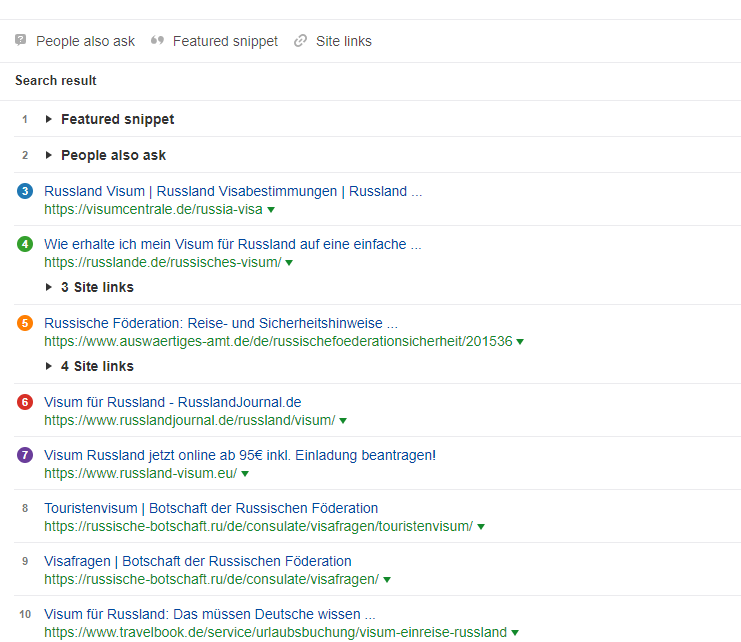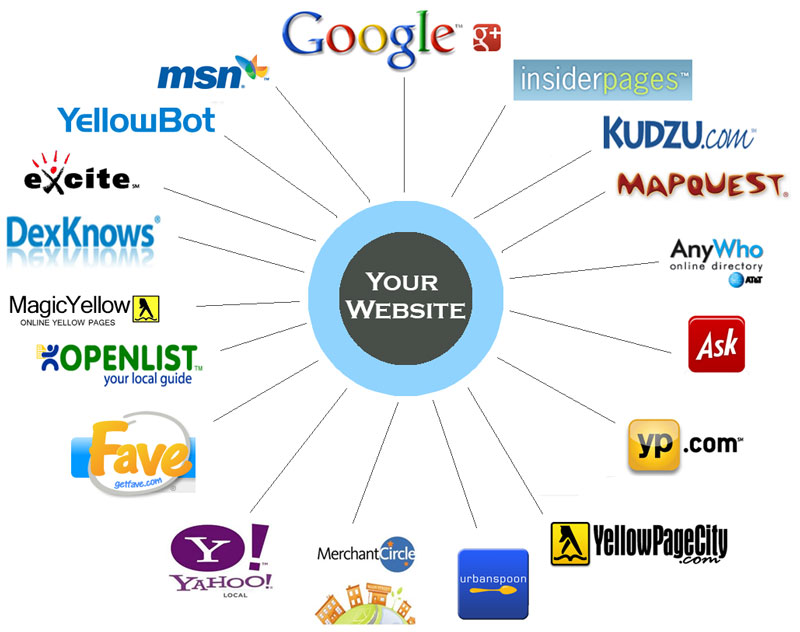In the article we will tell
Scaling a business to several markets at once raises a lot of questions regarding website promotion in several languages at once, which is understandable, because you want to make a website that will not only appeal to users, but also to search engines, plus you also don’t want to overpay for complex technical implementation, which in fact, it may not be so necessary.Strategy for growing your website from
Part 1: Geostrategy
In order to promote in different languages and countries , we, first of all, need a website fully translated into these languages, and the language versions should be located separately from each other. This is where the main question arises: where to place these versions: in a folder, on a subdomain, or on national domains.
Let’s see what the difference is:
- Folders – (site.com/fr/ site.com/de/) What is characteristic here is that there is no clear link to the region; a site with language versions in folders is easy to maintain (hosting, etc.) and easier to promote, because when promoting links will pump up the domain as a whole. For example, it is quite possible to promote some not very competitive requests in rare languages (Dutch, Swedish, Danish) without links, if you place these language versions in folders on a domain that is well-targeted for an English-speaking audience. As a rule, there are not so many requests in these languages, but they certainly will not be superfluous, especially considering the high standard of living and solvency of the population of these countries.
- Subdomains (de.site.com, fr.site.com, it.site.com) are the most rarely used and inconvenient option. Link juice will be calculated as for individual sites, which increases promotion costs significantly. And subdomains do not have the advantages of national domains in the form of recognition and connection to the region. When should you use them? When the specifics of business dictate its own rules.
- National top-level domains – These are domains like site.de, site.fr, site.it The main advantage is that such domains inspire more trust among the local Internet audience, since historically in Germany sites with the extension .de in France .fr, etc. Another difference is that here there is a clear link to the region, but otherwise there are continuous difficulties: promotion becomes more difficult and more expensive, because these are all separate sites; which need to be serviced; link juice does not add up in any way, so you will have to fork out for more links, and even in different languages. Well, why do we need it?
It would seem that the simplest option is folders: one site, it’s easy to maintain, pay for hosting services, etc. In a word, no headaches and no problems. But it’s not that simple. It all depends on the type of service and niche. After all, it may turn out that it is precisely for our target queries that the majority of sites on national domains will be in the niche, which is a kind of beacon indicating to us that only such sites are favored by search engines and users here, and we with our language versions in folders then we’ll just spend a lot of money and time on promotion, and then there’s no guarantee that we’ll advance.
That is why, before launching, you need to collect the primary semantic core and develop a geo strategy based on it, so as not to make a mistake and not redo everything again later.
Let’s move on to explain with examples. Let’s take some arbitrary requests for businesses from different areas.
Let’s say we want to promote a website that provides visa services for foreigners. This is what the issue looks like for the request “Visa to Russia” (russland visum) in Germany:

5 national domains out of 8, it is obvious that it is better to choose the national domain – .DE.
Let’s look at a similar request “visa to Russia” in French.

Again, the dominance of national domains (even the rare .coms that we came across have only French). The conclusion suggests itself.
Let’s take some request that does not require being in a specific region to receive a service, for example, “Convert video.”
Let’s look at the results in English in the USA:

In Great Britain:

In France:

From which we conclude that when promoting such requests, a national domain is not required, so we will make the English version the main one and place it on the .com domain, and place the French language in the /fr/ folder.
It may even turn out that to promote in a certain country, we may need a national domain with language versions in folders. This is relevant for countries where there are 2 official languages. For example, in Montreal, Canada, many local businesses (beauty salons, medical clinics, etc.) have both English and French versions on the .ca domain.
We summarize all the above information in a table:
| Domain type | Region binding | Recognition among the local population | Promotion costs | Website maintenance costs |
| site.com/fr/ site.com/de/ | No | No | Average | Average |
| de.site.com fr.site.com | No | No | High | Average |
| site.desite.fr | Yes | Yes | High | High |
So, we figured out how to choose a geo strategy. Let’s move further towards technical optimization.Financial payback model from
Rush (it’s free)
We will transparently show how much you can increase sales from the site
- We will conduct a comprehensive audit of your website
- Based on the audit, we will make a forecast for traffic, conversion, leads and sales
- We will show the expected payback period

Part 2. Technical optimization
Many articles have already been written on how to technically implement the structure of a multilingual website and help search engines figure out what’s what. Just google “promote a multilingual website”
Let’s just go over the main points one more time.
Here again, everything greatly depends on which domain option we chose to host the language versions. If there are national domains, then search engines already understand in which region our site should be ranked, and additional settings are usually not required.
But what if we need to promote different versions of the site in the same language, but for different regions (for example, the USA and the UK)? Or, for example, are there many English-language queries in some other countries where English is not the official language? How can we force Google to show exactly the version we need if they are located in folders or on subdomains?
Just for this purpose, Google came up with hreflang attributes, which are designed to help the search engine figure out where each language version is located. You can read more about this here https://support.google.com/webmasters/answer/
These attributes can be placed in the xml sitemap, html tags and http headers. The best option, in our opinion, is html tags.
The language in the tags is indicated in ISO 639-1 format
An example implementation for the main page of the English-language site http://domain.com, which has other language versions located in folders:
<link rel=”alternate” hreflang=”en” href=”http://domain.com/” />
<link rel=”alternate” hreflang=”fr” href=”http://domain.com/fr/” />
<link rel=”alternate” hreflang=”es” href=”http://domain.com/es/” />
<link rel=”alternate” hreflang=”de” href=”http://domain.com/de/” />
In addition to language, you can add region information in ISO 3166-1 Alpha 2 format . For example:
<link href=”http://domain.com/es/” rel=”alternate” hreflang=”es-mx”> – This page is intended for Spanish-speaking residents of Mexico.
Let’s talk a little about “x-default”, which is often mistakenly prescribed for the main version of the site. According to Google’s help, it should be used “when the language or regional settings of the page do not match the browser settings,” and also “if the user is asked to select their country from a map on the main page of the site.”
Another option for regional binding is Google search console. You can set up targeting for an entire site or for an individual folder. For example, if our German language is located in the /de/ folder, and for some reason we want to attract traffic only from Germany, then this can be easily configured in this section:
But note that in practice the effect of such a link is weaker than that of a national domain.
Part 3: On-page optimization
It is imperative that all site content, including meta tags and URLs, must be written in the appropriate language.
For example, if we have requests in French, then the content, title and description must be written in competent French. We know that search engines don’t penalize mistakes, but it still pushes users away and, as a result, can affect conversion and behavior. For example, in Germany, buyers are very jealous of the site’s literacy, and can easily leave the site if they find errors.
An example of a well-optimized page where there are occurrences of keywords in meta tags, URL, and also a well-written USP in the description:

Part 4: Off-page optimization
Probably the most difficult thing, because you need to strive to create a link profile as close as possible to the natural one by placing links of different types: article, forum, links from question-and-answer sites, etc.

But the most important and important thing: all links must be placed from sites in the language of the country under which we are promoting .
Knowledge of the language here is a decisive factor and increases productivity significantly, although you can try to write to all webmasters in English, but, firstly, although it is an international language, not everyone speaks and writes it well. This is especially true for those countries where residents strive to preserve their linguistic identity (for example, France).
Secondly, the likelihood of receiving a positive response from the webmaster increases significantly when you write to him in his native language – this immediately creates in his eyes the image of a fairly reliable company that can afford employees who speak different languages.
And, thirdly, this opens up additional opportunities when analyzing competitor sites and their link profile, because you can more effectively monitor their publications, new links on various platforms and quickly respond to them.
If you still don’t know where to start your multilingual website and where to get links to it, then contact our agency. We have many years of experience in promoting multilingual websites and employees who are fluent in the world’s main languages: English, German, French, Spanish and Italian.




